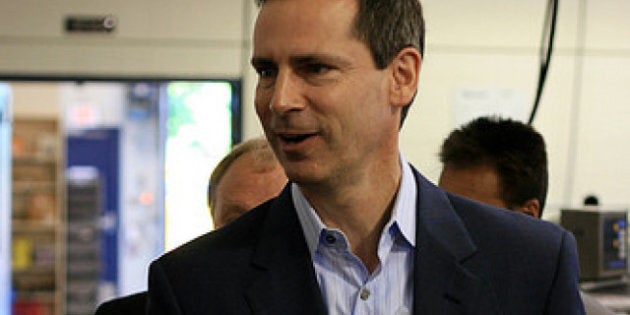
Ontario's Liberal Premier Dalton McGuinty seemed destined for electoral defeat, badly trailing the Tories earlier in the summer. In addition, the NDP's federal breakthrough to official Opposition brought the spectre of the NDP displacing the Liberals on the centre-left, another worrying trend for Ontario Liberals -- especially as the NDP won more seats in Ontario federally than the Liberals did.
Mr. McGuinty has narrowed the Progressive Conservatives' lead with the Liberals at 30 per cent and Tories at 35 per cent, according to a recent Nanos poll, raising the possibility that the Liberals could overtake them; in more recent polls the Liberals are actually leading the Progressive Conservatives. While the NDP had a bump shortly after the 2011 election, their support was reduced by August, and as low as 12 per cent in one poll. With the goodwill surrounding Jack Layton's passing away, Nanos now has the NDP at 26 per cent, which is a significant increase, though still trailing the Liberals.
Mr. McGuinty's rebound -- at least for now -- has hinged on an assertively progressive platform and a record in office that offers a clear contrast to the Tories, while outflanking the NDP on the left on environmental conservation, in particular.
The Liberals have a record of promoting wind and solar power and green jobs. As well, the Liberal government established a greenbelt around Metropolitan Toronto and the urbanized areas around western Lake Ontario, protecting farmlands and forests from urban sprawl.
On education -- grades kindergarten to 12 and post-secondary -- the McGuinty Liberals have emphasized education as an investment essential to creating a skilled workforce for the 21st century, and to promoting upward mobility. Liberals have pledged additional spending in this area, expanding kindergarten education (as part of an already ongoing initiative) and providing tuition grants for low to middle-income families based on 30 per cent of the average cost of university tuition. There would be a comparable grant for students attending community college.
The Ontario Liberals are offering a progressive platform, which is tied into the themes of economic growth and jobs. With their progressive track record on conservation, this is not an example of the disillusioning formula of campaigning on the left and governing on the right. The McGuinty Liberals have both governed and campaigned as progressives.
By showing they clearly stand for environmental conservation, the Ontario Liberals have shown their party stands for something, attracting the support of environmental groups and giving people a reason to vote and volunteer.
These are examples for the New Brunswick Liberals to follow. The New Brunswick Liberals' process of party renewal has rightly examined party structure, considering ways the leadership could be more responsive to the party membership. This is a particularly pressing concern, as the last Liberal government embarked on conservative policies (like flattening the tax rate) which were in contradiction to much of the party's progressive membership.
However, for most of the public, debates on whether One-Member-One-Vote is the best method for leadership selection are of little interest. Ultimately, structural reform will be meaningless unless the Liberal Party stands for a clear set of principles that give people reasons to vote for it, volunteer, and donate. The party needs to engage with the public and community activist/issues based groups.
The last Liberal government had a comprehensive anti-poverty program implemented by then-Social Development Minister Kelly Lamrock. Promoting this program would be a means to connect with anti-poverty groups and the poor, as they would have a reason to support the party. The New Brunswick Liberals can also follow the Ontario Liberals' example of having strong stances on conservation, and attracting citizens and groups interested in the environment.
Issues such as the Alward government's decision to move forward on fracking, to cut education, and to roll back elements of the last government's anti-poverty initiative, are of concern to many New Brunswickers. These issues, related to the environment, social justice, and economic development, can be used to mobilize New Brunswickers who want to improve life in their province, and who can see supporting the Liberals as a means to bring that about.
By offering an assertively progressive platform that recognizes the importance of economic prosperity and job creation, the Liberals can offer a clear contrast to the Tories while also staving off a potential challenge on the left from the NDP. This has brought the Ontario Liberals back from seeming political oblivion, making a Tory victory much more uncertain and putting the NDP on the defensive.
This article originally appeared in the Telegraph Journal.
Hassan Arif is a columnist with the Telegraph Journal in New Brunswick. He is a PhD candidate in urban sociology at the University of New Brunswick and has a background in law and political science. He can be reached at arif.telegraphjournal@gmail.com.